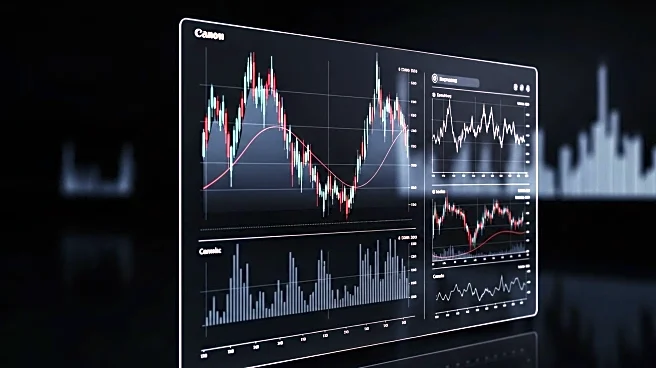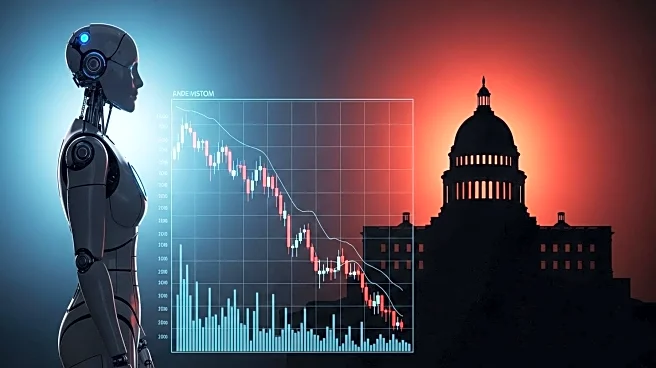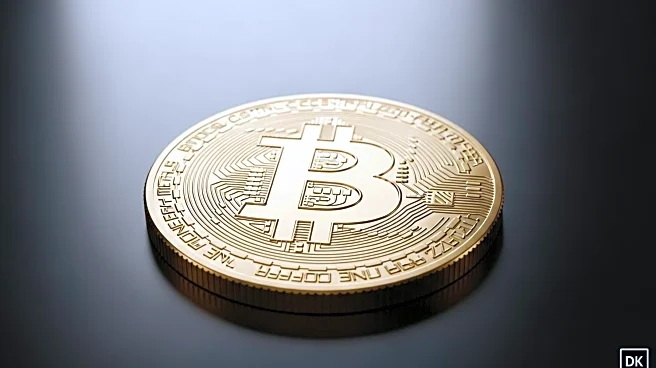What is the story about?
What's Happening?
Following a historic liquidation event in the crypto market, traders are adjusting their strategies to mitigate risks. The event, dubbed 'Black Friday,' saw Bitcoin plummet by 17% and resulted in approximately $20 billion in liquidations. This crash was triggered by President Trump's announcement of a 100% tariff on all Chinese products, in response to Beijing's restriction on rare mineral exports. The shockwave affected traditional markets as well, with the S&P 500 dropping 3.37%. Traders are now buying more downside protection, with high demand for options at Bitcoin's $115,000 and $95,000 strikes, and Ethereum's $4,000 and $3,600 strikes. Experts caution that the weekend rally may be a recalibration move amid ongoing structural risks.
Why It's Important?
The 'Black Friday' crash highlights the vulnerability of the crypto market to geopolitical events and policy changes. The shift in trader sentiment towards downside protection indicates a cautious approach in the face of potential instability. This event underscores the interconnectedness of global markets, where actions by major political figures can have far-reaching impacts. The increased volatility and demand for protective options suggest that traders are preparing for prolonged uncertainty, which could affect market liquidity and investor confidence.
What's Next?
While the crypto market has shown signs of recovery, experts warn of deeper structural risks, particularly concerning liquidity dominance by major platforms like Binance. The market's rebound may mask underlying fragilities, and traders remain on the defensive until macro risks subside. The demand for calls on the 30+ day horizon suggests some traders anticipate a recovery later in the quarter. The market will need to rebuild liquidity and confidence, with volatility expected to remain high.
AI Generated Content
Do you find this article useful?













